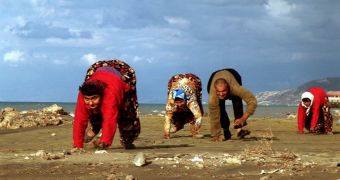In 2006, BBC released a documentary titled “The Family That Walks on All Fours.” The documentary, available below, tells the tale of five siblings who walk using both their hands and legs, and who cannot get around in an upright position.
Shortly after this documentary hit the public eye, several researchers attempted to explain the family's weird style of walking. The theory that was brought to the table and even got to stick around for desert was backward evolution.
However, it looks like the time has come for this theory to pack its bags and hit the road. Thus, a recent paper in the journal PLOS ONE argues that the five siblings, who live in Turkey, do not represent a backward stage of evolution.
On the contrary, anthropologist Liza Shapiro with the University of Texas at Austin in the US argues that, according to evidence at hand, this family's style of walking is nothing like the ones documented in non-human primates.
Researcher Liza Shapiro explains that, in order to gain a better understanding of this odd medical condition, dubbed the Uner Tan Syndrome (UTS, for short), she and her team watched several videos of the siblings and other people suffering from the same disability.
These people's walking style was then compared to that of monkeys and apes. It was thus discovered that folks displaying Uner Tan Syndrome symptoms did not walk in a diagonal pattern as did non-human primates, but instead got around in lateral sequences.
More precisely, both the siblings in Turkey and other people diagnosed with this condition walked by placing a foot down and then extending a hand on the same side. By comparison, apes and monkeys first put a foot down and then moved a hand on the other side.
Based on these findings, anthropologist Liza Saphiro argues that people affected by the Uner Tan Syndrome are not an example of backward evolution. More so given the fact that, when asked to get down on all fours, healthy adults embrace the same style of walking.
“Although it’s unusual that humans with UTS habitually walk on four limbs, this form of quadrupedalism resembles that of healthy adults and is thus not at all unexpected,” the University of Texas at Austin researcher said in a statement.
“As we have shown, quadrupedalism in healthy adults or those with a physical disability can be explained using biomechanical principles rather than evolutionary assumptions,” Liza Saphiro went on to comment on the outcome of this investigation.
The anthropologist and fellow researchers maintain that, rather than being a backward stage of evolution, the style of walking displayed by Uner Tan Syndrome patients is merely an adaptation to anatomical particularities that make walking in an upright position downright impossible.

 14 DAY TRIAL //
14 DAY TRIAL // 